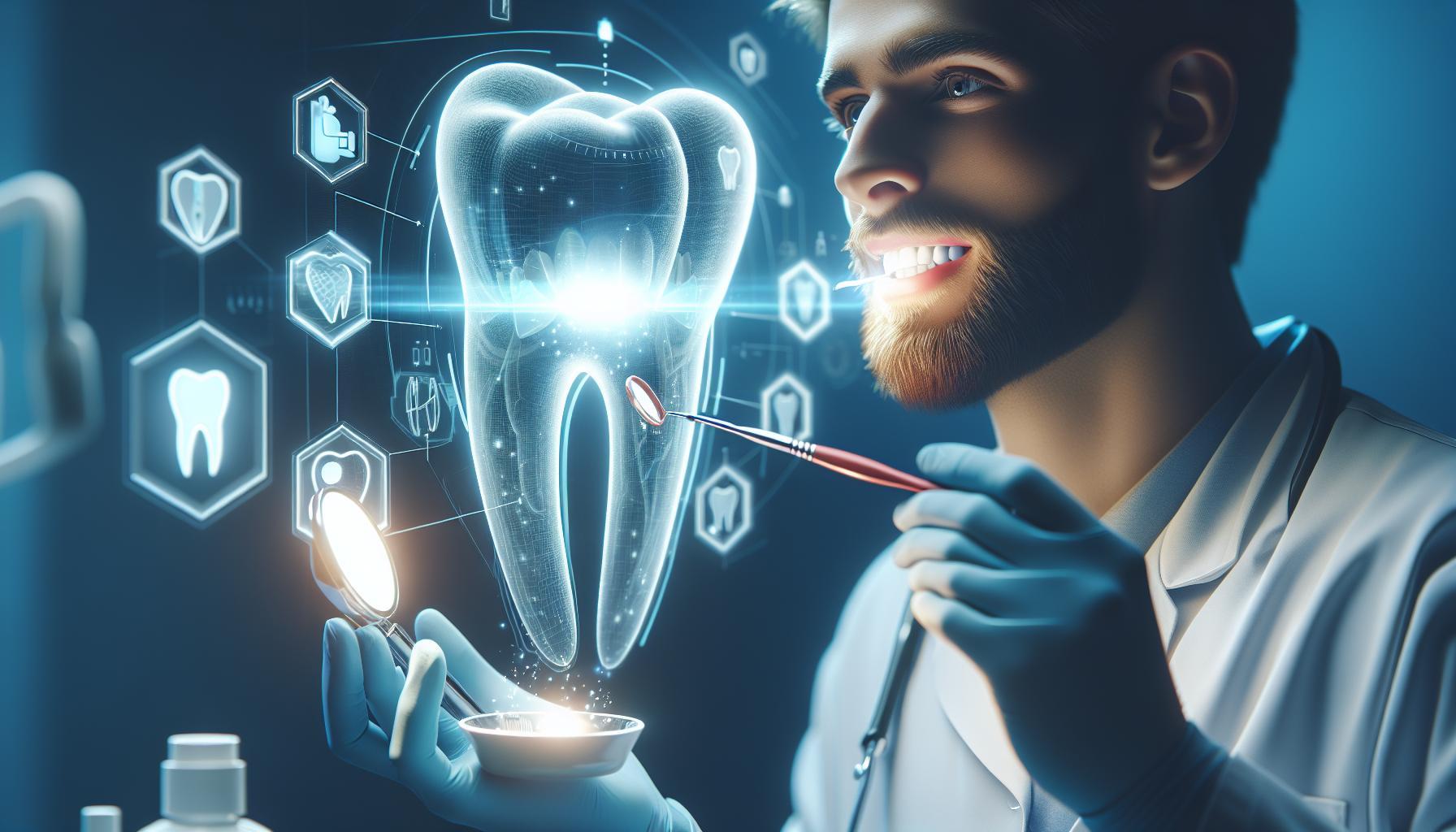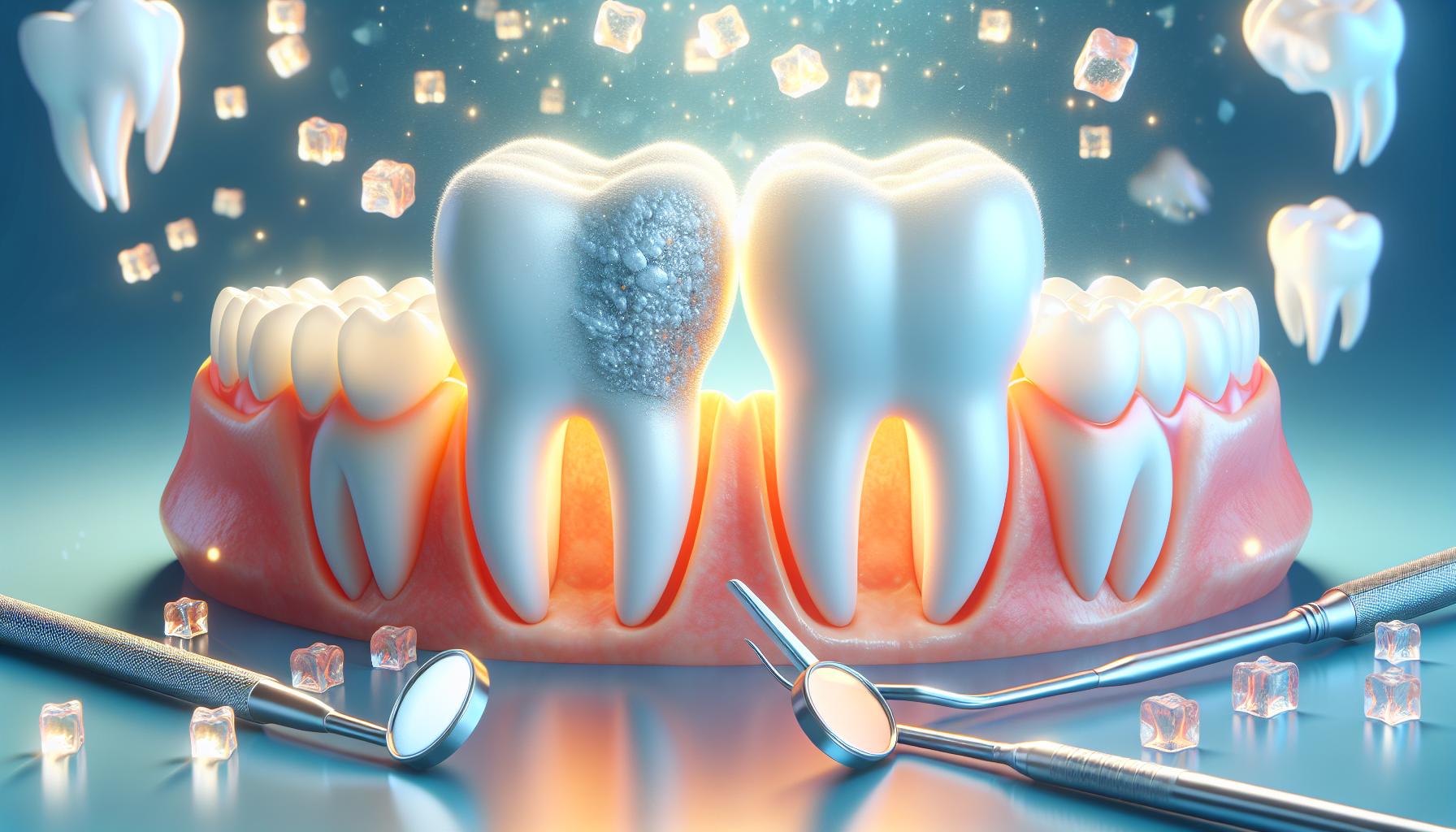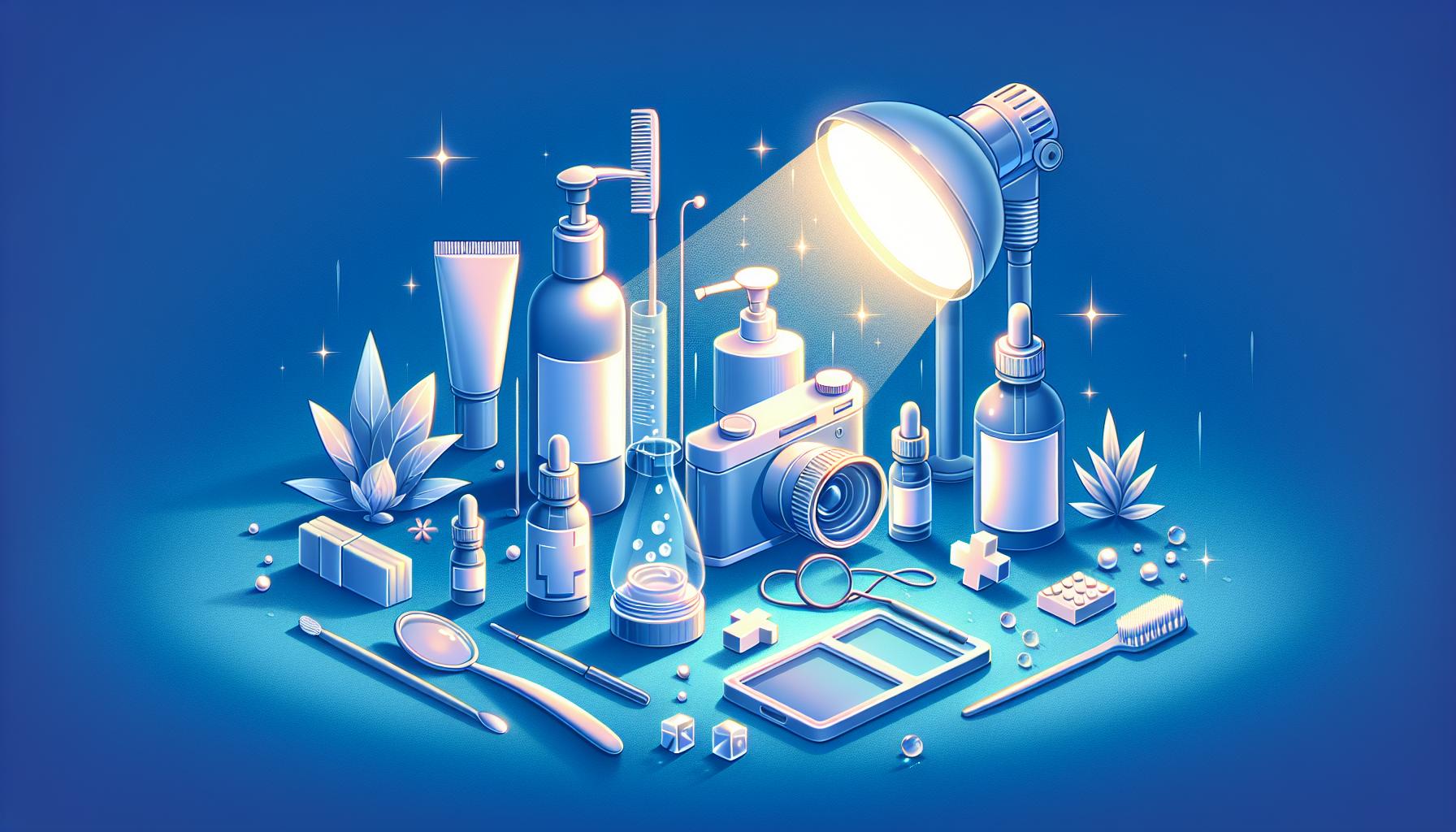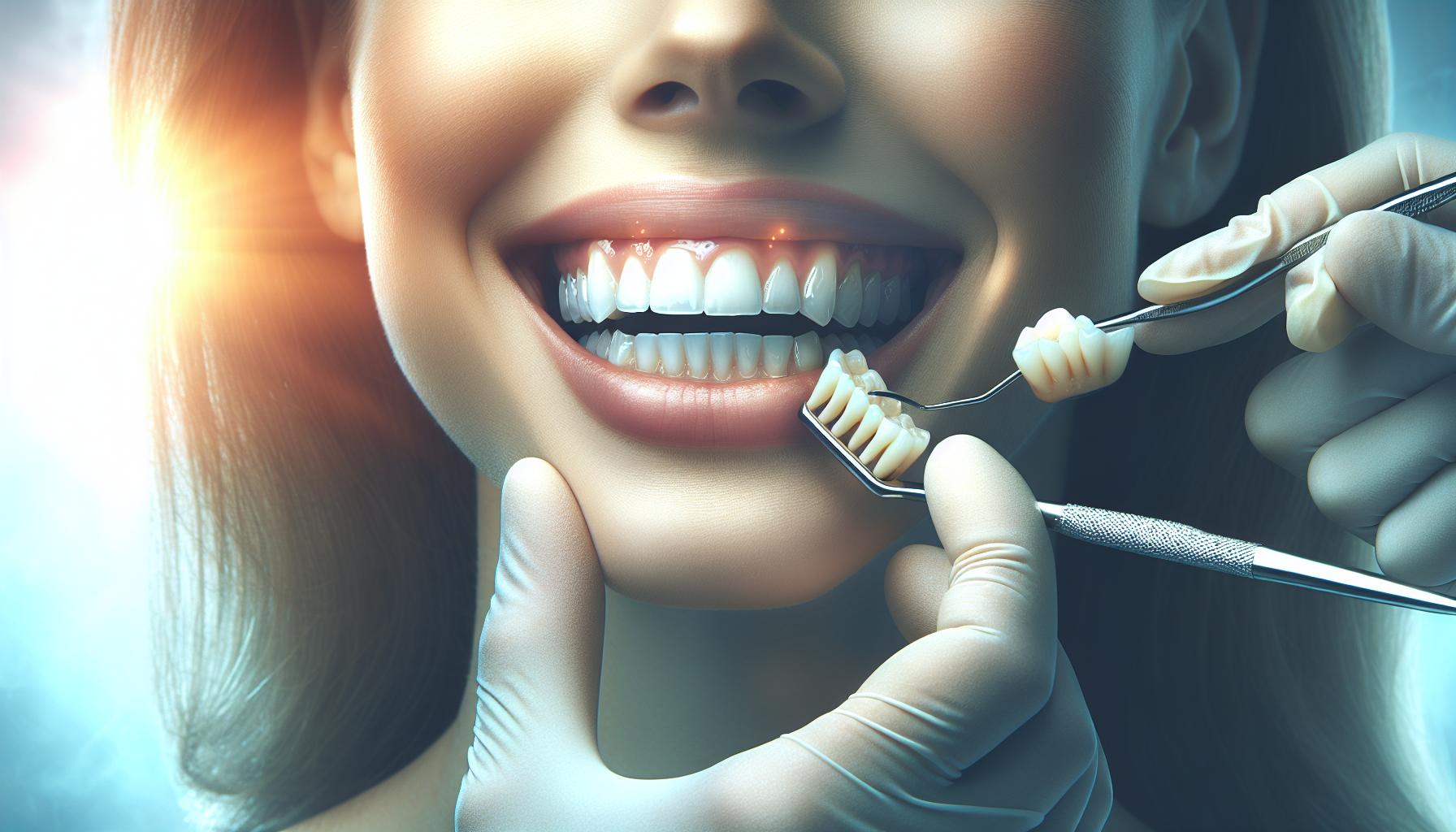plaque and tartar can silently wreak havoc on yoru oral health, leading to cavities and gum disease if left unchecked. Understanding effective removal techniques is essential for maintaining a bright smile and fresh breath. This guide offers dentist-approved tips to combat thes common dental foes and promote a healthier mouth.
Understanding Plaque and Tartar: What’s the Difference?
Caring for your teeth goes beyond mere brushing and flossing; understanding the enemy is crucial. When it comes to oral hygiene, plaque and tartar are two terms that frequently arise, yet many people confuse them. Recognizing the differences between these two dental foes can empower you to maintain a healthier smile, and knowing how to remove plaque and tartar from teeth is vital for anyone seeking to enhance their oral health.
What is Plaque?
Plaque is a sticky, colorless film of bacteria that forms on your teeth throughout the day. It develops from food particles and saliva and can begin to accumulate as quickly as 4 to 12 hours after brushing. If not removed, plaque can harden to become tartar, leading to several dental issues.
- Composition: Primarily made of bacteria that feed on sugars and starches.
- Formation: Forms within hours and can be addressed with regular brushing and flossing.
- Effects: Can cause cavities and gum disease if left untreated.
What is Tartar?
Tartar, also known as calculus, is what happens when plaque is left untreated for an extended period. This hardened substance forms when mineral salts in saliva merge with plaque, making it unachievable to remove with a toothbrush alone. Tartar often manifests at the gum line and can lead to more severe dental problems.
- Composition: Hardened plaque that has mineralized over time.
- Formation: Takes about 24 to 72 hours to form and requires professional cleaning for removal.
- Effects: Irregular surface can trap more plaque and result in gum disease and tooth decay.
Comparison Table of Plaque vs. Tartar
| Feature | Plaque | Tartar |
|---|---|---|
| Appearance | Colorless, sticky film | Yellow or brown deposits |
| Removal | Can be brushed off | Requires professional cleaning |
| Formation Time | 4 to 12 hours | 24 to 72 hours |
| dental Impact | Can lead to cavities | Increases risk of gum disease |
Understanding the crucial differences between plaque and tartar is the first step in combating them effectively. Regular brushing and flossing are your primary defenses against plaque, while for stubborn tartar, it’s essential to seek professional dental cleanings. By adopting these practices and embracing dentist-approved tips on how to remove plaque and tartar from teeth, you can ensure your oral hygiene routine remains robust and effective.
The Importance of Maintaining Good Oral Hygiene
The Crucial Role of Good Oral Hygiene
Did you know that nearly 75% of adults over the age of 35 have some form of gum disease? This staggering statistic underscores the importance of maintaining robust oral hygiene practices. Good oral hygiene goes far beyond just having a bright smile; it serves as the foundation for overall health and well-being. among various oral health issues, plaque and tartar buildup can lead to cavities, periodontal disease, and even impact systemic health conditions such as diabetes and heart disease.
To effectively manage plaque and tartar, a consistent oral hygiene routine is pivotal. Here are some essential practices to consider:
- Brushing Twice Daily: Use fluoride toothpaste and brush for at least two minutes each time to remove food particles and prevent plaque accumulation.
- Flossing Daily: This step clears debris from between teeth and below the gum line—areas were brushes may not reach.
- Regular Dental Checkups: Schedule professional cleanings every six months. Dental professionals can remove hardened tartar and identify any issues early.
- Healthy Diet Choices: Limit sugary snacks and drinks that feed harmful bacteria, and choose foods rich in fiber that promote saliva production.
Following these dentist-approved tips is essential for preventing plaque formation and ensuring that tartar does not develop. The longer plaque remains on the teeth, the easier it is indeed for it to harden into tartar, which can only be removed through professional dental cleaning. Thus, adopting a proactive stance on oral hygiene can stop these problems before thay start.
Moreover,practicing good oral hygiene provides much more than just a health benefit; it boosts your confidence. A clean mouth and healthy teeth can substantially enhance self-esteem,making individuals feel more secure in social situations. By prioritizing oral hygiene, you not only protect your health but also enable yourself to engage confidently with others.
Taking the time to understand can lead to lifelong benefits. Remember, the mouth is the gateway to the body, and caring for it properly translates to optimal health.
Top DIY Techniques for Effective Plaque Removal
Did you know that plaque can start forming on your teeth within just 24 hours? This sticky substance, composed of bacteria and food particles, can lead to tartar build-up and subsequent dental issues if not addressed promptly. adopting effective DIY techniques for plaque removal is crucial for maintaining oral health alongside regular dental visits. Here are some dentist-approved methods to tackle that stubborn plaque at home.
Brushing Techniques for maximum Impact
Using the right technique when brushing your teeth can significantly enhance plaque removal.Here are some tips to improve your brushing routine:
- Brush Regularly: Aim to brush your teeth at least twice a day for two minutes each time. This habit helps dislodge food particles and plaque.
- Use a Soft-Bristled Brush: A soft-bristled toothbrush is gentle on your gums yet effective in cleaning teeth without causing damage.
- Follow the Proper Technique: Hold your toothbrush at a 45-degree angle to your gums. Use gentle circular motions on the outer and inner surfaces of your teeth while ensuring you brush your tongue as well.
Flossing: A Key Weapon Against Plaque
Flossing may seem tedious,but it’s an essential component of oral hygiene that can help remove plaque from areas your toothbrush might miss. Here’s how to make flossing work for you:
- Choose the Right Floss: Whether it’s waxed or unwaxed,select one that feels comfortable and effective.
- Use Proper Technique: Gently slide the floss between your teeth using a zig-zag motion. Curve it around each tooth to remove plaque at the gum line.
Rinse and refresh: Natural Mouthwashes
Utilizing a mouthwash can enhance your daily plaque-fighting regimen. Consider these natural alternatives that are effective yet gentle:
- Salt Water Rinse: mix half a teaspoon of salt in a cup of warm water and rinse your mouth. This can help reduce bacteria and soothe gum inflammation.
- Apple Cider Vinegar Rinse: Dilute one tablespoon of apple cider vinegar in a glass of water. This mixture can help break down plaque, though it should be used sparingly to protect tooth enamel.
Diet Matters: Foods that Fight Plaque
What you eat plays a significant role in the formation of plaque. Incorporate these foods into your diet to help fight back:
| Food | Benefits |
|---|---|
| Crunchy Vegetables (e.g., carrots, celery) | Natural scrubbing action that helps remove plaque. |
| Cheese | Boosts saliva production, which neutralizes acidity. |
| Green Tea | Rich in antioxidants that help reduce bacteria. |
Implementing these DIY techniques can be a game-changer for fighting plaque and tartar buildup. Consistency is key, so integrate these practices into your daily oral hygiene routine for the best results. By doing so, you’ll not only maintain a brighter smile but also promote your overall health with these dentist-approved methods for effective plaque removal.
Best Practices for tartar Control at Home
Did you know that plaque can harden into tartar within just 24 to 72 hours if left untreated? This conversion can occur right in your own home, but there are effective strategies to combat plaque buildup and keep your smile healthy and bright.implementing a few dentist-approved practices can significantly reduce the risk of tartar accumulation, ensuring that your dental hygiene routine is both effective and efficient.
Daily Oral Hygiene routine
Establishing a consistent oral care regimen is crucial in the fight against tartar formation. Follow these practical steps every day to maintain dental health:
- Brush twice Daily: Use a soft-bristled toothbrush with fluoridated toothpaste to gently clean all surfaces of your teeth. Spend at least two minutes brushing, ensuring that you focus on both the front and back surfaces.
- Floss Daily: Flossing removes food particles and plaque from between the teeth where a toothbrush can’t reach. make it a habit to floss at least once a day.
- Use Mouthwash: An antimicrobial mouthwash can help reduce plaque buildup and kill bacteria that contribute to gum disease. Look for options that have the ADA seal of approval.
Specialized Tools and Products
Utilizing the right tools can enhance your home dental care. Here are some recommendations:
| type of Product | Benefit |
|---|---|
| Electric Toothbrush | More effective at removing plaque compared to manual brushing due to superior technique and consistency. |
| Interdental Brushes | Ideal for cleaning between teeth, especially for those with braces or larger gaps. |
| Dental scrapers | Safe at-home tools for gently removing plaque, but should be used with caution to avoid damaging gums. |
Dietary Considerations
What you eat plays a significant role in your dental health. Here are some dietary tips that support tartar control:
- Crunchy Vegetables: Carrots and celery can act as natural toothbrushes, helping to scrub away plaque as you chew.
- Avoid Sugary Foods: Limit snacks high in sugar, as they increase the risk of plaque buildup.Opt for healthier snacks like nuts and cheese instead.
- Stay Hydrated: Drinking water helps rinse food particles and bacteria, aiding in the prevention of plaque formation.
Incorporating these best practices can help you effectively manage plaque and tartar from the comfort of your home.By maintaining a consistent oral hygiene routine and being mindful of your dietary choices, you’re not only improving your dental health but also perhaps avoiding costly dental treatments down the line.
How Diet Influences Plaque Buildup
Did you know that your diet plays a crucial role in the formation of plaque on teeth? What you eat not only affects your overall health but also the health of your teeth and gums. The foundation of a clean mouth often lies in the food choices you make daily.
The Impact of Sugars and Starches
Sugars and starches are among the primary culprits in plaque buildup. When consumed, these carbohydrates interact with the bacteria in your mouth to form acid. This acid can erode enamel, leading to cavities and contributing to plaque formation. Foods high in sugar,such as candies and sodas,are especially problematic for dental health.
Consider the following shortlist of common dietary items and their effects on plaque formation:
- Candies and Sweets: Stick to your teeth and foster a breeding ground for bacteria.
- Starchy Foods: Foods like bread and chips can convert to sugar quickly, increasing acid levels.
- Sugary Beverages: Sodas and fruit juices not only contain sugars but can be acidic, worsening enamel erosion.
Beneficial Foods for Your Teeth
On the flip side, certain foods can definitely help reduce plaque and promote good oral health. Incorporating a diet rich in fruits and vegetables can aid in this endeavor.Crunchy fruits and veggies help scrub your teeth as you chew, thereby reducing plaque buildup.
Increasing your intake of the following can enhance your dental hygiene:
| Food | Benefits |
|---|---|
| Apples | Natural scrubbing action, increase saliva production. |
| Carrots | High in fiber, helps remove food particles. |
| Leafy Greens | Rich in calcium and vitamins, supporting overall oral health. |
| Yogurt | Contains probiotics, which can combat harmful bacteria. |
Hydration and Oral Health
In addition to food choices, maintaining proper hydration is vital. Water is essential for rinsing away food particles and keeping the mouth moist, which aids in saliva production. Saliva is your body’s natural defense against plaque; it neutralizes acids produced by bacteria and helps wash away debris.Developing a routine that includes drinking water after meals can significantly lower your risk of plaque accumulation.
Incorporating these dietary changes and practices can lead to a noticeable improvement in oral health, ultimately helping you to discover effective techniques on how to remove plaque and tartar from teeth at home.By understanding the influence of your diet on plaque buildup, you set the stage for healthier teeth and gums.
When to Seek Professional Help for Tartar Removal
Understanding When Professional Help is Necessary
Maintaining oral hygiene is crucial, but sometimes, despite our best efforts, tartar buildup can become overwhelming. Tartar, also known as calculus, forms when plaque hardens on your teeth, potentially leading to gum disease and other dental problems. While home remedies and consistent brushing can definitely help manage plaque,there are signs that indicate it’s time to seek professional help for tartar removal. Recognizing these signs early can save you from more severe dental issues down the line.
Signs You Need to Visit the Dentist
- Visible Tartar Buildup: If you notice a yellow or brown crust along your gum line, this is a clear indication of tartar. Regular brushing may not be sufficient to remove it.
- Persistent Bad Breath: halitosis can be a sign of underlying dental issues. If brushing and mouthwash do not alleviate this problem, tartar could be the culprit.
- Bleeding Gums: Experiencing bleeding during brushing or flossing is a sign of gum disease, which can be exacerbated by tartar buildup.
- Tooth Sensitivity: Increased sensitivity to hot or cold could indicate that the enamel is compromised or that gum recession is occurring due to tartar.
Visiting a dentist for professional cleaning is essential not only for removing tartar but also for maintaining overall dental health.Dental professionals possess the necessary tools and expertise to address tartar and plaque buildup effectively.They can also provide personalized advice on how to prevent future buildup,addressing any dietary or brushing technique concerns you may need to modify.
Post-Cleaning Guidance and Follow-Up Care
After a professional cleaning, it’s vital to follow your dentist’s recommendations to maintain a tartar-free smile. regular dental check-ups, typically every six months, are essential to keep plaque at bay. Your dentist may also recommend specific toothpaste or mouth rinses that help control tartar buildup, providing an extra layer of protection between visits.
By following these guidelines and seeking timely dental care, you can significantly reduce the risk of tartar-related issues and enjoy a healthier smile. Remember, your oral health is an investment, and prompt action can lead to better long-term outcomes.
Recommended Tools and Products for Dental Care
Did you know that maintaining a diligent dental care routine can greatly reduce the risk of plaque buildup and tartar formation? With the right tools and products, you can enhance your oral hygiene regimen significantly, ensuring your teeth remain healthy and bright. Here are some recommended tools and products that align with dentist-approved tips for removing plaque and tartar from teeth effectively.
Essential Tools for Effective Oral Care
Using the appropriate tools is crucial in your battle against plaque and tartar. Here are some key items that can make a ample difference:
- Electric Toothbrush: Studies have shown that electric toothbrushes can remove more plaque than manual brushes. Look for models with timers and pressure sensors to maximize cleaning.
- Interdental Brushes: These small brushes can reach areas between teeth where regular toothbrushes can’t, effectively removing plaque in those hard-to-reach spots.
- Dental floss: Daily flossing is essential for preventing plaque and maintaining gum health. Opt for waxed floss if you have tight contacts between teeth.
- Tartar Control Toothpaste: Choosing a toothpaste specifically labeled as tartar control can help in the prevention of tartar buildup and is often enriched with fluoride for added protection.
Recommended Products for Advanced Care
In addition to standard tools, there are specialized products that can elevate your dental care game. Incorporating these into your routine can definitely help keep plaque and tartar at bay:
| Product | Features | Benefits |
|---|---|---|
| Water Flosser | Delivers a strong stream of pulsating water. | Great for removing food particles and plaque from between teeth and below the gumline. |
| Antimicrobial Mouthwash | Contains active ingredients that kill bacteria. | Reduces plaque buildup and helps prevent gum disease. |
| Chewing Gum with Xylitol | Sugar-free gum enhanced with xylitol. | Stimulates saliva flow and helps reduce cavity-causing bacteria. |
choosing Wisely for Your Best smile
When selecting products for dental care, it is vital to choose options recommended by dental professionals. Always consult with your dentist before introducing new tools or products into your routine, especially if you have specific dental concerns. By incorporating these dentist-approved tips and tools into your daily routine, you’ll be well on your way to effectively removing plaque and tartar from your teeth, ensuring your smile remains healthy and radiant.
creating a Routine: Daily Habits for Healthy Teeth
Did you know that the average person can accumulate as much as 100 grams of plaque on their teeth in a year? Regular dental care is essential, but creating a robust daily routine can be the key to preventing the buildup of plaque and tartar. by incorporating simple, dentist-approved habits into your life, you not only maintain the aesthetics of your smile but also promote long-term dental health.
Start with a Consistent Brushing Routine
Brushing your teeth is the cornerstone of any oral hygiene regimen. Make it a priority to brush at least twice a day for two minutes each time.Use a fluoride toothpaste to help strengthen tooth enamel and prevent cavities.When it comes to technique:
- Hold your toothbrush at a 45-degree angle to your gums.
- Use gentle circular motions to clean the outer surfaces, inner surfaces, and chewing surfaces of your teeth.
- Don’t forget to brush your tongue to remove bacteria that can cause bad breath.
Integrate Flossing into Your daily Life
Brushing alone isn’t enough; plaque can hide between your teeth, leading to the formation of tartar.Flossing daily helps remove food particles and bacteria from areas your toothbrush can’t reach. Aim to floss at least once a day, preferably before bedtime.
If traditional floss feels cumbersome, consider alternatives like interdental brushes or flossers that might potentially be easier to use.
Rinse Wisely
Along with brushing and flossing, using an antimicrobial mouthwash can significantly enhance your oral care routine. It helps reduce bacteria and freshen your breath. Choose a mouthwash that contains fluoride for added protection against cavities.
Here’s a simple table to illustrate a daily oral hygiene routine:
| Time | Action |
|---|---|
| Morning | Brush with fluoride toothpaste, floss, rinse with mouthwash. |
| After Meals | Rinse with water or mouthwash if brushing isn’t possible. |
| Evening | Brush, floss, and rinse again before bedtime. |
Mind Your Diet
Your eating habits also play a crucial role in plaque control. Foods high in sugars and starches can foster the growth of harmful bacteria. Opt for a balanced diet rich in:
- Fruits and Vegetables: Crunchy fruits and veggies help clean teeth naturally.
- Dairy products: Foods like cheese can help neutralize acids in the mouth.
- Whole Grains: They are less likely to cling to teeth compared to processed grains.
It’s clear that maintaining healthy teeth requires a holistic approach. By establishing a disciplined routine with regular brushing, flossing, and mindful eating, you lay the groundwork for a plaque-free smile. Following dentist-approved tips to remove plaque and tartar from teeth can lead to not just better oral health, but also greater confidence in your smile!
Common Myths About Plaque and Tartar Debunked
The battle against plaque and tartar is often clouded by misconceptions that can hinder effective dental care. Understanding the truth behind these myths is essential for anyone looking to maintain a healthy smile. Let’s explore some of the most common misconceptions surrounding plaque and tartar and arm you with the knowlege to combat them effectively.
Myth #1: Plaque and tartar Are One and the Same
Many people believe that plaque and tartar are interchangeable, but this is far from the truth. Plaque is a soft, sticky film of bacteria that forms on your teeth throughout the day. If not removed through regular brushing and flossing, it can harden into tartar, a much tougher substance that can only be removed by a dental professional. understanding this distinction is crucial in developing an effective oral care routine.
Myth #2: You Can Rely Solely on Dental Cleanings
While regular check-ups and professional cleanings are vital components of oral health, they shouldn’t be your only line of defense against tartar buildup.Some individuals may mistakenly believe that they can forgo daily dental hygiene provided that they visit the dentist twice a year. In reality, daily brushing and flossing are essential in controlling plaque and preventing its hardening into tartar. Neglecting regular care can lead to adverse effects on your dental health, including cavities and gum disease.
Myth #3: Natural Remedies Can completely Replace Commercial Products
there is a common belief that natural remedies, such as baking soda or vinegar, can effectively eliminate plaque and tartar without using toothbrushes or commercial toothpaste. While certain natural methods may aid in reducing plaque, they should not replace proven dental hygiene practices. Regular brushing with fluoride toothpaste remains the gold standard for keeping your teeth clean and your smile bright.
| Myth | Fact |
|---|---|
| Plaque and tartar are the same. | Plaque is soft; tartar is hardened plaque requiring professional removal. |
| Dental cleanings make daily care unneeded. | daily brushing and flossing are essential in preventing plaque and tartar buildup. |
| Natural remedies can replace toothpaste. | While helpful,natural remedies should complement,not replace,regular dental hygiene. |
By dispelling these myths, you can better understand how to remove plaque and tartar from your teeth effectively.With the right daily dental care and some insight into what actually influences oral health, you’ll be well on your way to achieving a cleaner, healthier smile. Embrace the facts, and take charge of your dental routine with confidence!
Q&A
How to Remove Plaque and Tartar from Teeth: Dentist-approved Tips?
To remove plaque and tartar from teeth, regular brushing, flossing, and professional dental cleanings are essential. consistent oral hygiene practices help prevent plaque buildup, which can harden into tartar if not addressed promptly.
To maintain a healthy mouth, ensure you brush twice and floss once daily. Professional cleanings at your dentist’s office are vital, as they can safely remove tartar using specialized tools.
Consider following other dental care tips for additional support in your oral health journey.
What is the difference between plaque and tartar?
plaque is a soft, sticky film of bacteria, whereas tartar is hardened plaque that can only be removed by a dentist. Plaque forms continuously on teeth and can be managed easily with daily brushing and flossing.
In contrast, tartar develops when plaque is not removed for an extended period, resulting in a rough surface that attracts more plaque.
Regular dental visits are key in controlling tartar buildup, often focusing on cleaning areas where plaque tends to accumulate, thus ensuring long-term oral health.
Why does tartar form on teeth?
Tartar forms from plaque that has been allowed to harden due to poor oral hygiene habits. It starts as a sticky layer of bacteria, and when it’s not effectively brushed away, it mineralizes within 24 to 72 hours.
Factors such as diet, genetics, and insufficient brushing can contribute. Maintaining regular brushing and flossing will minimize plaque and tartar formation,and a balanced diet can also help maintain oral health.
Can I remove tartar at home?
Home remedies cannot completely remove tartar; visiting a dentist is necessary. While specific dental tools exist on the market, they can be ineffective and may even cause damage to your gums.
though, you can reduce plaque buildup through proper brushing and healthy eating. Over-the-counter products like tartar-control toothpaste can definitely help slow tartar formation, but they don’t substitute for professional cleanings.
What are some effective techniques for plaque removal?
Effective plaque removal techniques include using a soft-bristled toothbrush,flossing daily,and utilizing mouthwash. brushing for two minutes at least twice a day,focusing on all surfaces of your teeth,is crucial.
Incorporating dental floss helps remove food particles and plaque between teeth that brushes can miss. Additionally, using an antimicrobial mouthwash can help reduce bacteria and improve your overall oral hygiene routine.
Why is professional dental cleaning vital?
Professional dental cleaning is important because it removes tartar and plaque that regular brushing cannot. Dentists have the tools and expertise to thoroughly clean all areas of your mouth, including hard-to-reach spots.
Regular cleanings can also help in early detection of potential dental issues, allowing for prompt treatment and better preservation of your overall oral health.Scheduling visits at least twice a year can significantly improve your dental health.
Can poor diet contribute to plaque and tartar buildup?
Yes, a poor diet high in sugar and carbohydrates contributes significantly to plaque and tartar buildup. Sugary foods provide a food source for the bacteria that form plaque, making it critical to limit these items.
Instead, a diet rich in fruits, vegetables, whole grains, and dairy can help promote good oral health. Drinking plenty of water also aids in washing away food particles and bacteria, further reducing plaque accumulation.
To Conclude
maintaining optimal oral health is a journey that involves both proactive home care and professional support. By incorporating regular brushing, flossing, and the use of mouthwash into your daily routine, you can significantly reduce plaque and tartar buildup. Remember, prevention is key, and being mindful of your diet can also make a substantial difference.Don’t hesitate to schedule routine dental visits,as your dentist can provide invaluable insights and treatments tailored to your unique needs. Armed with these dentist-approved tips, you are empowered to take control of your dental hygiene. Explore further, stay informed, and prioritize your smile—it’s worth it!







